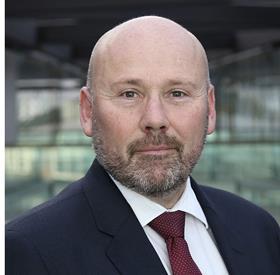A panel of specialists give their views on whether brokers still have the edge in a tough market
Xavier Woodward partner, Livingbridge

“The challenge is that the aggregator model is very price-focused, which brings with it an adverse customer selection risk – the customers you win are the most price-sensitive and least loyal, so renewal rates are likely to be lower as a result.
“In this environment, there are two types of winners. Either these are players who can profitably embrace this price competitiveness by leveraging hyper-efficient operations to build scale and create a virtuous circle of efficiency, or they are firms that can reframe the proposition away from price alone. For example, they can add best of breed product features and add other customer communication channels – such as winning on the aggregator, but then building a telephone relationship with the customer.
“In either event, maintaining excellence in customer service is key. Although some price-sensitive customers might decide to leave a company that, despite delivering good service, is a bit more expensive, it is really hard to keep hold of customers to whom you deliver poor service – whether you’re the cheapest or not.”
Tony Sault, executive director and UK general insurance market lead, EY

“Brokers are known for being entrepreneurial. There may be fewer of them, but they will continue to evolve and create different propositions for customers to engage with them, whether that be designing bespoke products or finding niches around which to create a different product.
“Personal lines is a really tough market because of the continued relentless cost price pressure. But in that sector the brokers are continuing to succeed by targeting niches and creating products that better meet those niches, increasingly through the MGA model.
“People have different needs and consequently present different risk profiles. That’s why the brokers are pretty good at servicing them and identifying capacity for those risks. So there is certainly going to be a need for them in the future.
“Some specialist motor insurers are primarily intermediary-driven and it works for them – brokers bringing in the right business.
“It’s just not a model that works for the whole of the mass market. When it comes to a volume play, it’s tough to make money because it’s so competitive.
“Insurers question why they need to give that business to a broker because it would just be eating into their margin.”
Gary Humphreys, group underwriting director, Markerstudy

“Brokers have to differentiate themselves. The successful ones fall into two camps: brands with good online journeys and big buying power, such as BGL Group, where it’s an aggregator-based model driven by the data and enrichment you can bring to the underwriting process; and brokers like A-plan, which sell on service, and not just price.
“It’s the people in the middle who are suffering because they don’t have the bandwidth in either of those two models. And those brokers are going to see their market share eroded as more and more motor customers go direct.
“Niche motor has always been a market that’s been underserved by the mainstream and the direct writers because it requires specialist knowledge and it’s expensive to handle if you’re not set up for it.
“The markets for, say, classic cars and modified vehicles are not easy to deal with online, so the brokers have that market pretty much to themselves – as long as they service it right.
“Fewer than 10% of our motor book is written on a direct basis. The brokers are key to our business and we support them across a range of products. Certainly, in our experience, as long as the customer service is good and the claims handling is good, then specialist motor is really sticky business.”












































No comments yet